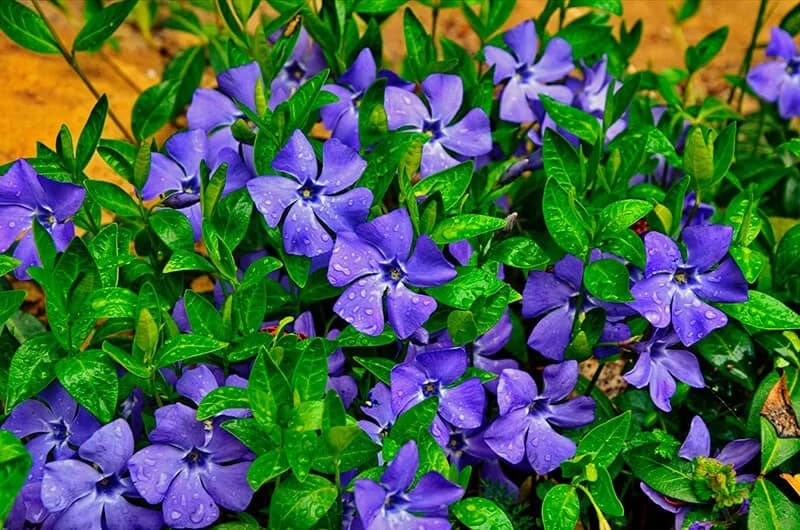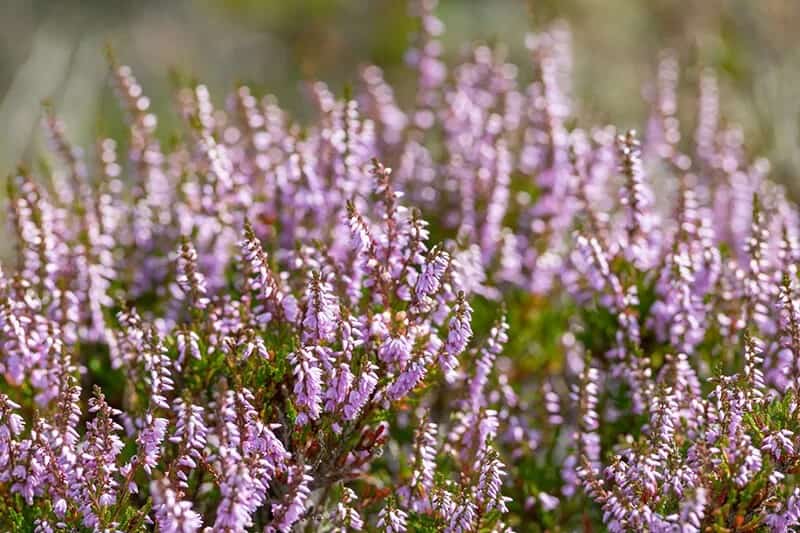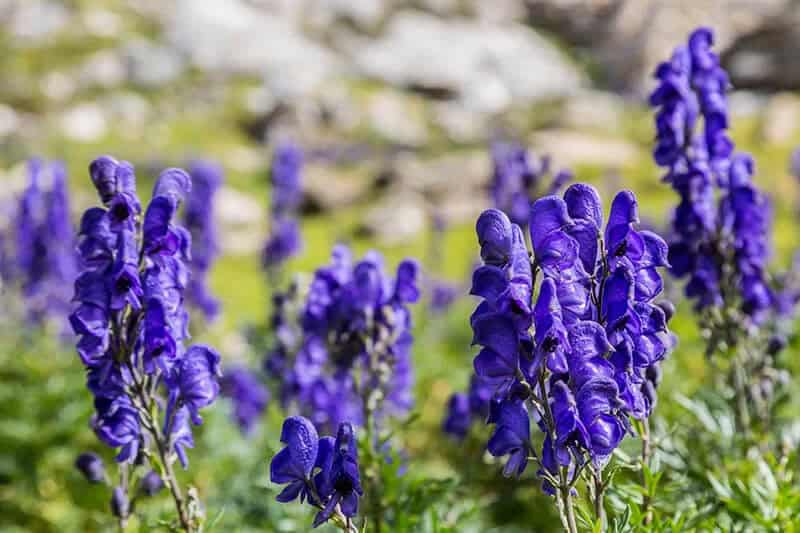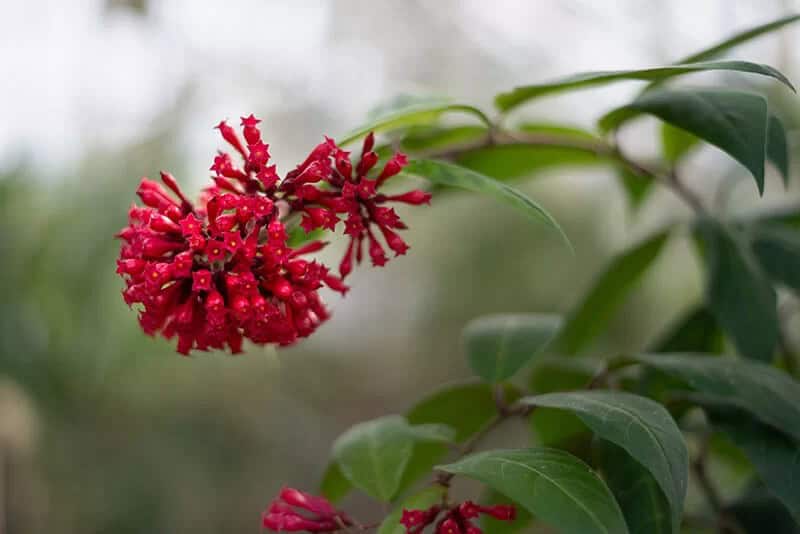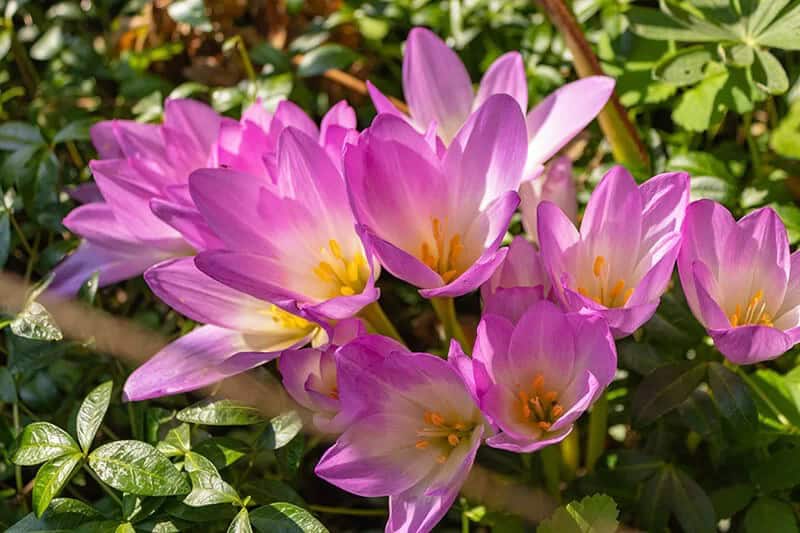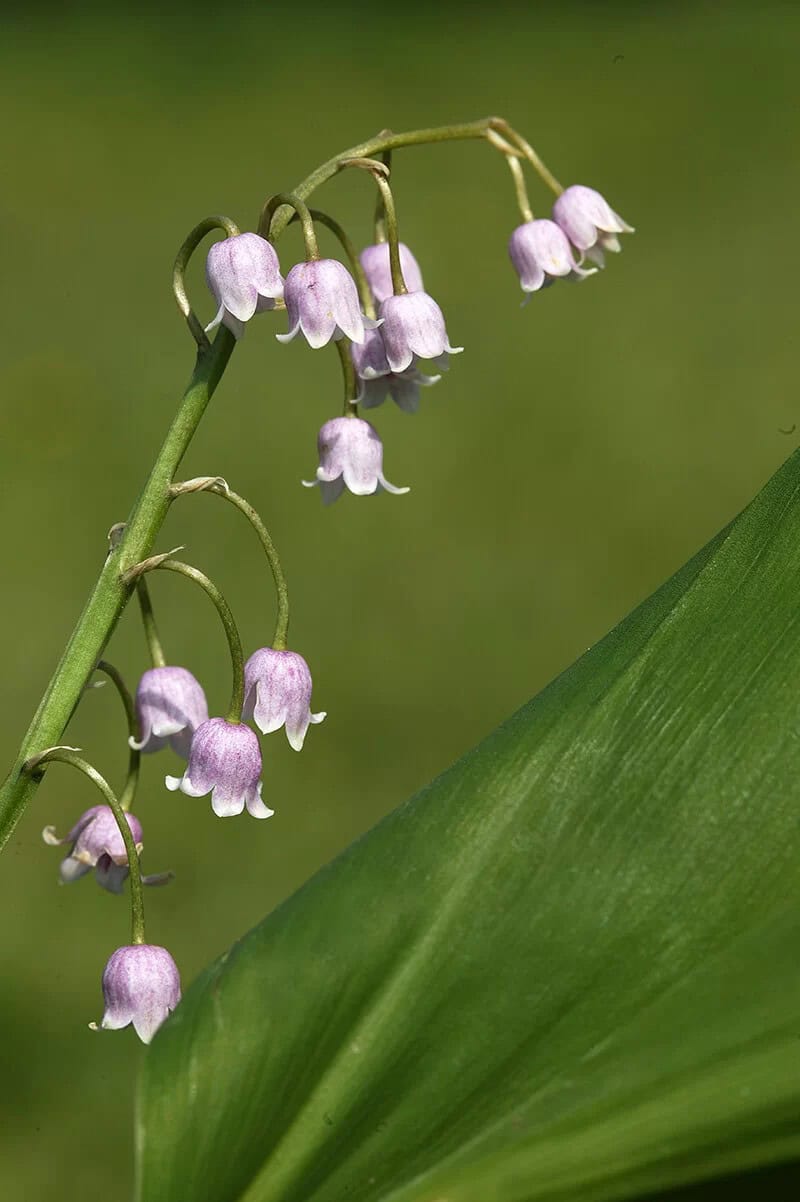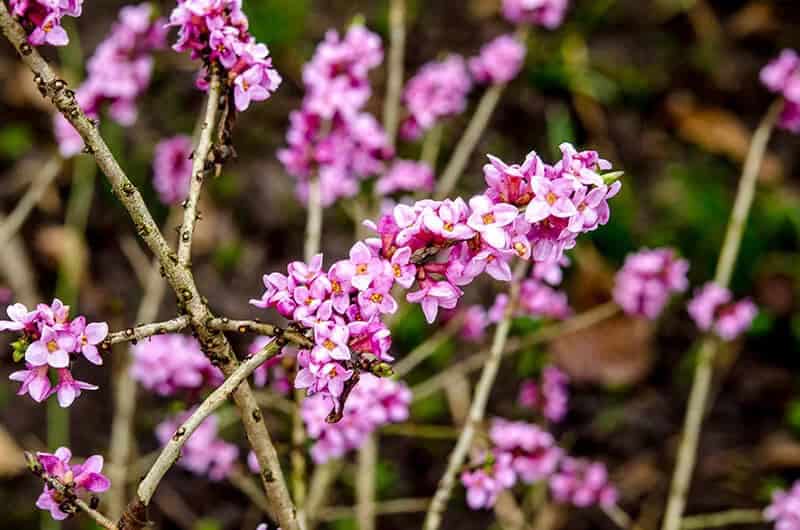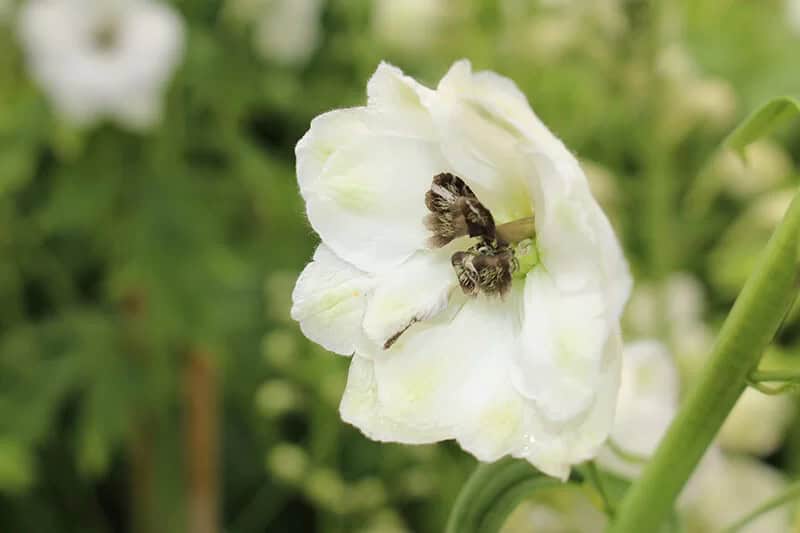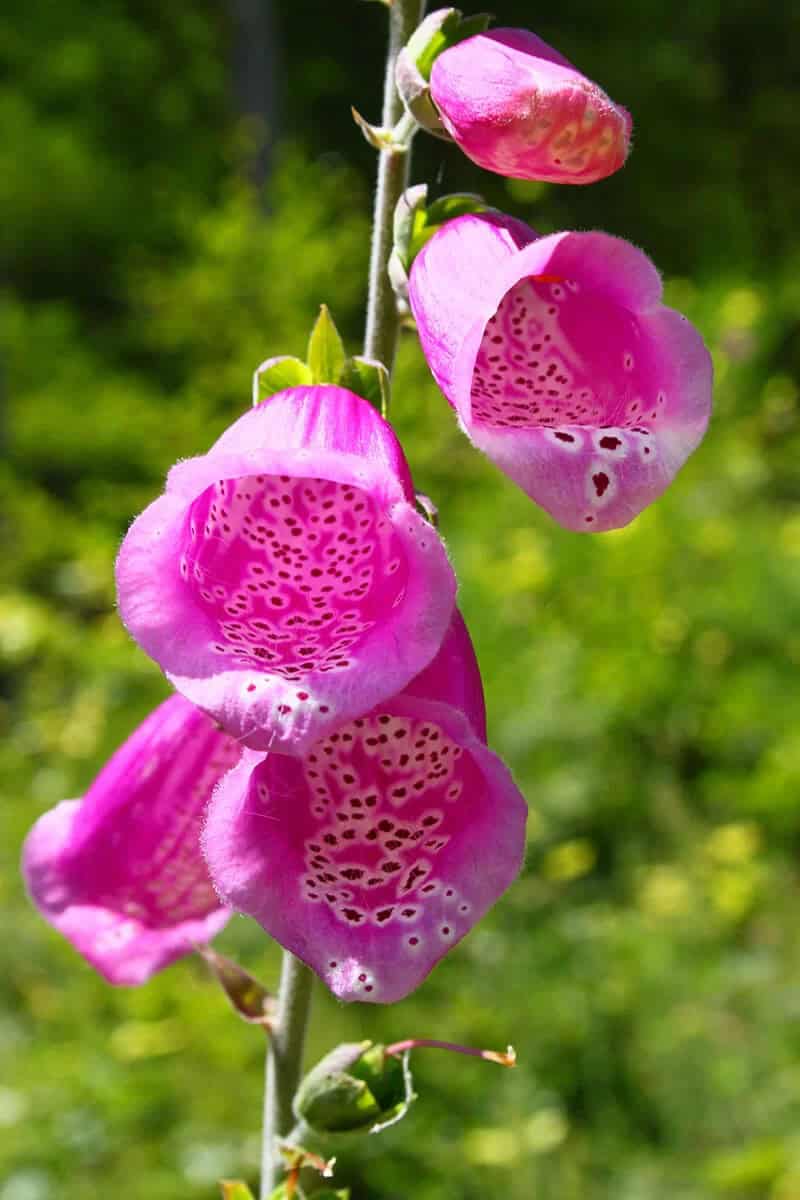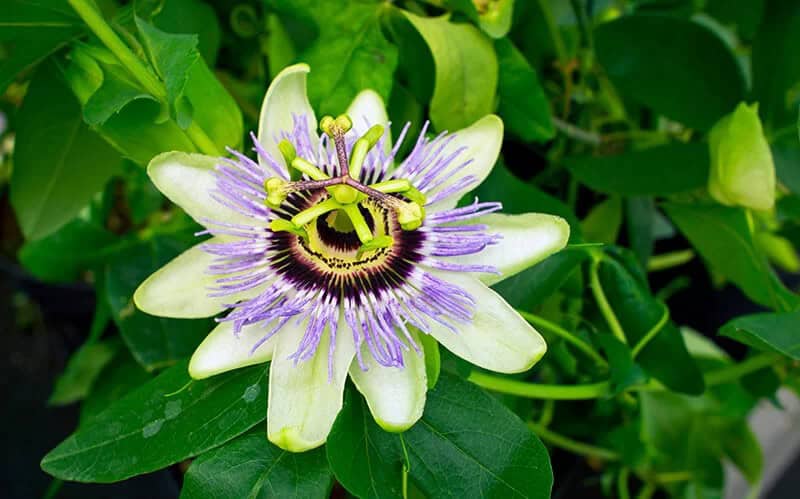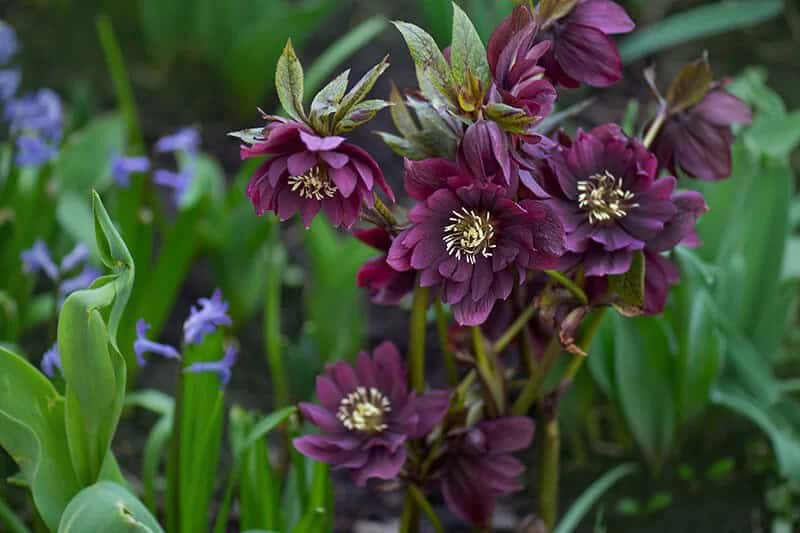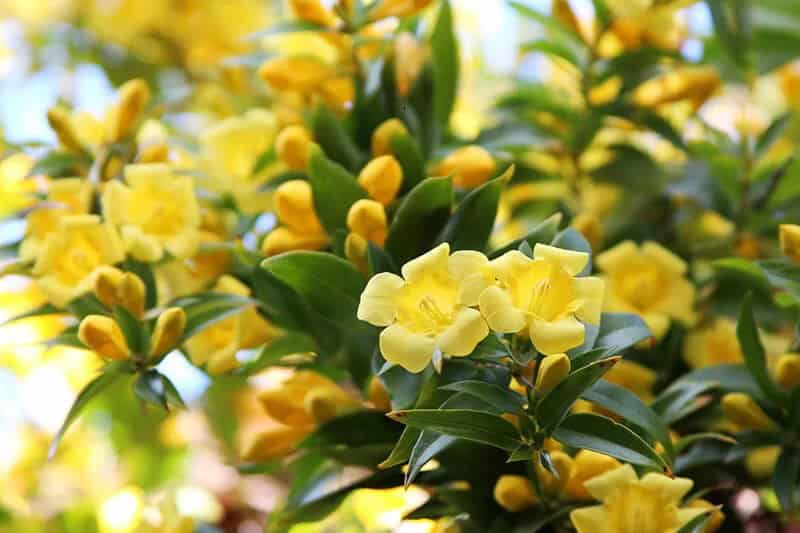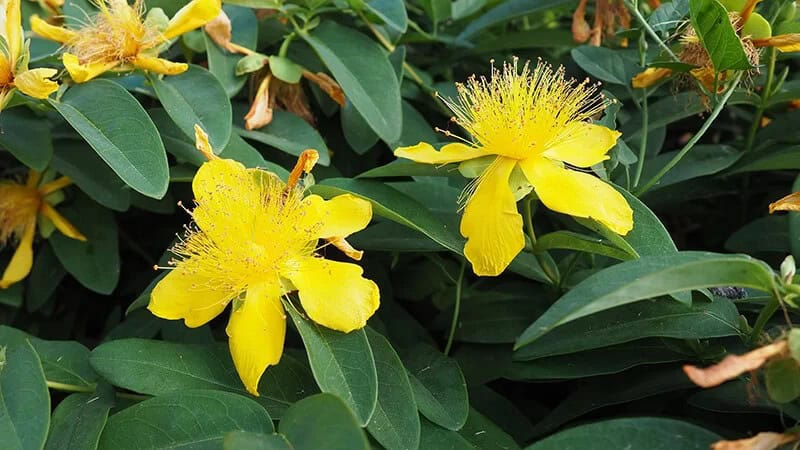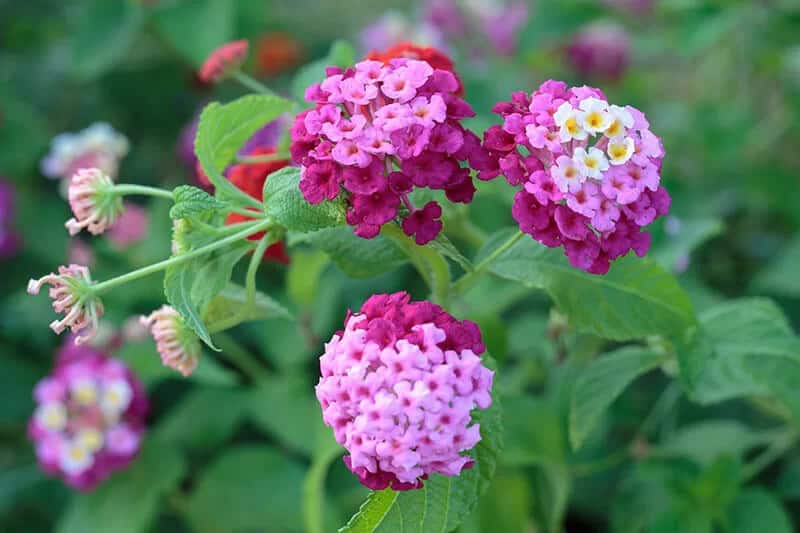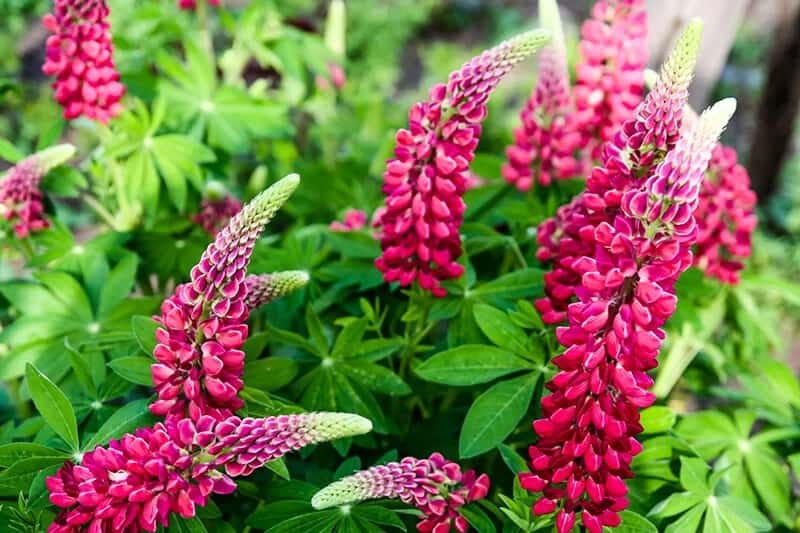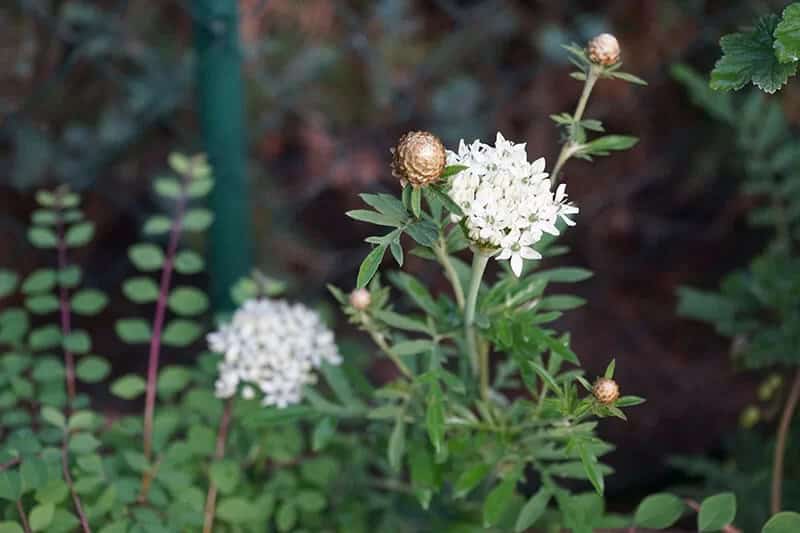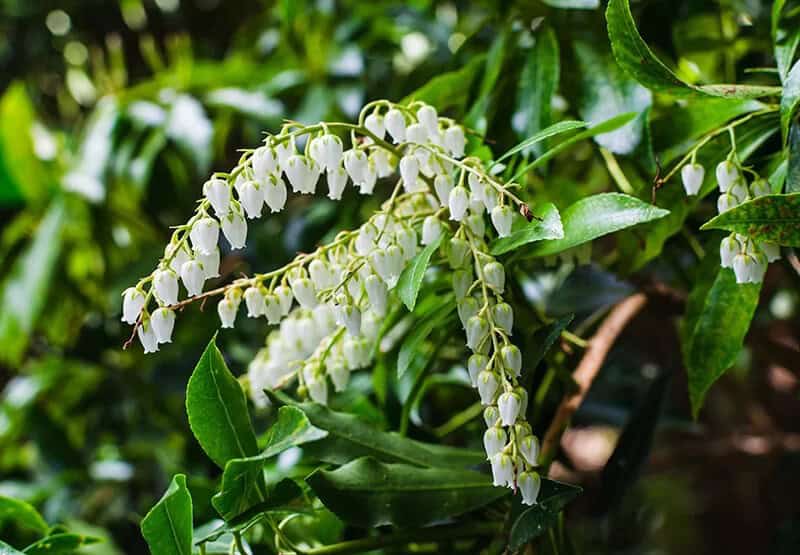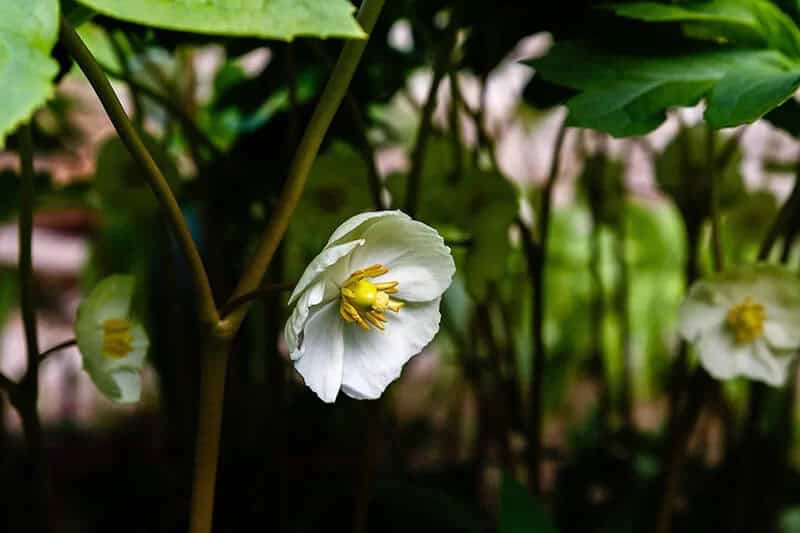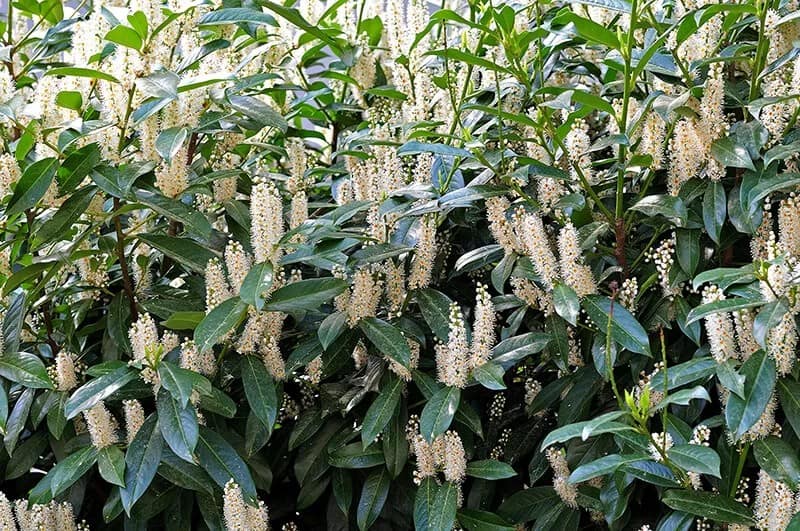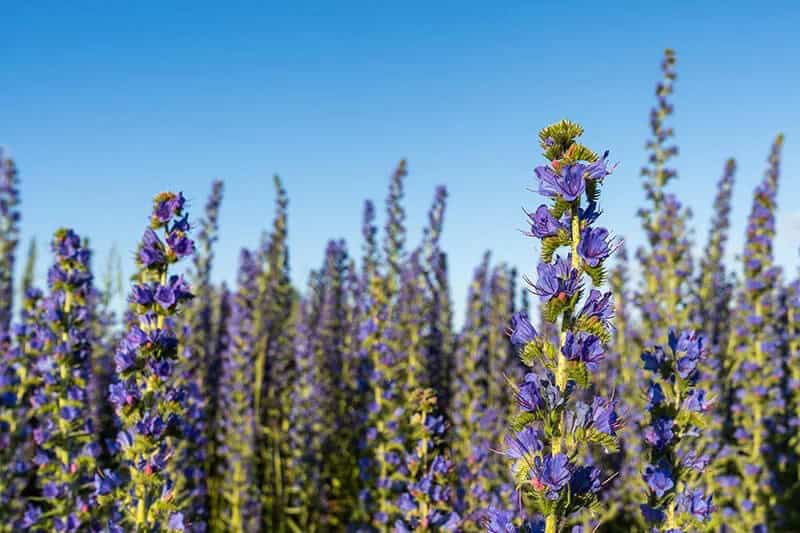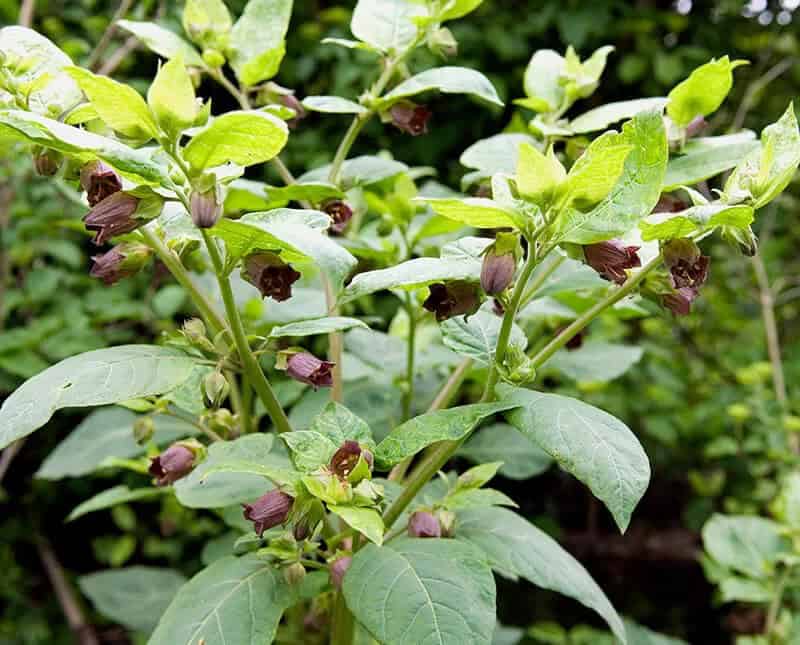Delving into the world of poisonous flowers is an intriguing experience that teeters between stunning allure and jarring peril. This dichotomy makes it all the more captivating to explore which flora are harmful. Perhaps you’re looking for a thrilling new addition to your garden this season, or maybe you simply want to expand your knowledge on toxic blooms. As we venture into this realm, some of these flowers might be familiar, while others will surprise even the most seasoned botanist.
27 Most Interesting Poisonous Flowers to Plant for a Dangerously Beautiful Garden
While many poisonous plants pose a threat to multiple species, including dogs and cats, as well as humans. Notably, some of these flora exhibit varying degrees of toxicity, requiring significant consumption to induce harm, whereas others can cause adverse effects even with minor contact. Regardless of your objective, our compilation aims to guide you in selecting the most suitable poisonous plants for your garden.
Periwinkle (Vinca Minor)
Periwinkle’s charming appeal lies in its symbolic significance of friendship and nostalgia. This low-maintenance groundcover thrives in dry to medium conditions, making it an excellent choice for drought-prone areas. Its tolerance for average soils with good drainage allows it to flourish in a variety of environments. Periwinkle is hardy and can be grown in zones 4 to 8, requiring only partial shade to full sun exposure.
As the seasons change, periwinkle blooms from May to June, adding a pop of color to your landscape. Despite being toxic if ingested, periwinkle poses no risk of skin irritation, making it suitable for placement along shady pathways or areas where it may be touched accidentally. However, it’s essential to note that periwinkle is highly toxic to dogs, cats, and horses, so take necessary precautions when planting around these pets.
Scotch Heather (Calluna Vulgaris)
Scotch heather, while potentially hazardous if ingested, is truly breathtaking when in bloom. Its showy, spiky purple blooms are sure to brighten up any landscape and make for a striking addition to any garden. Despite the potential risks associated with consuming this plant, it remains an excellent choice for landscaping purposes. However, due to its shallow root system, it’s not recommended to intersperse it with other flowers.
Dumbledore’s Delight (Aconitum Napellus)
The enigmatic Dumbledore’s Delight boasts an intriguing combination of symbolism tied to chivalry and villainy, making it a unique addition to any landscape. This plant thrives in medium water conditions, where the soil is kept moist with good drainage. Its optimal growing zones range from 3 to 7, and it requires full sun to part shade for proper growth. As an added bonus, Dumbledore’s Delight blooms during July and August, filling the air with purple hues.
However, its toxic nature necessitates caution when handling this plant. Gloves should be worn at all times, and any open wounds must be covered to prevent accidental exposure. Due to its poisonous properties, it is essential not to plant it near paths or areas where human interaction may occur.
Cestreau Élégant (Cestrum Elegans)
The crepe myrtle (cestraeau élégant) brings a touch of tropical elegance to any landscape with its vibrant, showy tubular flowers and glossy berries. While these features are certainly eye-catching, it’s essential to note that the plant is poisonous if ingested. A woody shrub by nature, cestreau élégant thrives when given the opportunity to climb, making it an ideal choice for gardeners who enjoy pruning as a relaxing activity.
To thrive, this plant requires average, well-draining soil and can tolerate mild drought conditions. It flourishes in full sun to part shade and blooms from May to September in USDA growing zones 8-11.
Meadow Saffron (Colchicum Autumnale)
Imagine strolling through your garden on a crisp autumn morning, surrounded by the vibrant hues of poisonous flowers that thrive in the transitional period between summer’s warmth and fall’s harvest. These unique blooms, with their crocus-like appearance, require rich soils with good drainage to flourish. While they are toxic to humans if ingested, they pose no danger to your furry friends – unless you’re a dog or cat owner, that is.
With full sun to part shade and a growing zone of 4-8, these autumnal wonders will fill the gap between summer-blooming flowers and fall’s first frost. Just be mindful that they are highly poisonous to animals, making them a fascinating yet cautionary addition to your outdoor space.
Lily of the Valley (Convallaria Majalis var. Rosea)
The Lily of the Valley (Convallaria majalis) is a striking addition to any shade garden. Its delicate bell-shaped blooms, tinged with pink, exude elegance in partial shade to full shade conditions. With a growth zone range of 2 to 7 and medium water requirements, this perennial thrives in fertile soil with good drainage. As the plant symbolizes reconciliation and happiness returning, it’s no wonder why it’s a popular choice for gardeners seeking serenity.
However, caution is advised when handling the Lily of the Valley, as its parts can cause violent illness in people, dogs, cats, and horses if ingested. With blooming season typically occurring from April to May, this beautiful yet poisonous flower should be carefully situated within the garden.
Mysterious Plant (Daphne Mezereum)
The enigmatic plant in question is characterized by its symbolic significance, serving as a source of motivation for those who cultivate it. In terms of its growth requirements, the plant thrives in medium water conditions and slightly alkaline, humus-type sandy soil with good drainage. Its ideal growing zones range from 4 to 7, while it tolerates both full sun and part shade.
As the seasons change, the plant blooms from March to April, producing vibrant pink petals that can be used to create a charming informal hedge. Although birds may consume the fruits without harm, all parts of the plant are toxic to humans, including the sap that oozes from broken stems, which can cause skin irritation.
Larkspur (Delphinium – Belladonna Group)
Larkspur, part of the belladonna group, brings a burst of good fortune and radiant energy to any garden. With medium water requirements and a preference for fertile humus-type soils with proper drainage, this flowering beauty thrives in zones 3 to 7. Full sun is essential, and it blooms majestically from May to July. While it’s well-suited to hot climates, its demands don’t stop there – regular staking and deadheading are necessary to maintain its striking appearance.
Despite the extra effort required, the larkspur’s vibrant flowers make it a worthwhile addition to any garden.
Witches’ Bells (Digitalis Purpurea – Excelsior Group)
Witches’ Bells, despite being potentially toxic to pets like dogs and cats, bring an undeniable air of magnificence to any landscape they inhabit. Standing tall at approximately four feet, each flower column commands attention with its striking presence. When grown in ideal conditions, these biennial perennials have the remarkable ability to self-seed, ensuring a breathtaking display year after year.
With their symbolism tied to childhood, humility, and submission, Witches’ Bells are a unique addition to any garden or outdoor space. As for growing requirements, they thrive in medium water needs, acidic soil with good drainage, and full sun to part shade, making them suitable for zones 4 to 8, where the blooming season typically takes place from June to July.
Japanese Loquot (Eriobotrya Japonica)
For those seeking to add some wintertime charm to their gardens, the Japanese loquat (a. k. a. Camellia japonica) is an excellent choice. While its seeds are toxic, the plant itself is relatively safe, making it a great option for those looking for a low-risk yet still lovely flowering addition. As it thrives in zones 8-10, gardeners residing in colder climates can still enjoy this beauty by growing it as a container plant.
With its preference for fertile, loamy soils and full sun to part shade, the Japanese loquat is an ideal choice for those seeking to add some elegance to their outdoor spaces.
Purple Passionflower (Passiflora Incarnata)
The symbolism behind the purple passionflower’s appearance is deeply rooted in faith, reflecting the plant’s unique ability to thrive in a variety of environments. When it comes to its water requirements, this flower is moderately thirsty and can survive with some drought tolerance, making it an excellent choice for gardeners who may forget to water from time to time. The soil should be well-draining and average in terms of fertility, allowing the roots to breathe and absorb nutrients freely.
When cultivating purple passionflower, you’ll want to focus on providing it with a sunny spot that receives full sun to partial shade. This will help the flowers unfold their vibrant petals and attract pollinators. In terms of growing zones, this plant is well-suited for climates ranging from 5 to 9. One interesting aspect of purple passionflower is its fruit production, which yields an edible treat known as a maypop.
However, it’s crucial to note that the flowers themselves are poisonous and can cause severe illness if ingested. Despite their potential dangers, these stunning blooms have earned a reputation for being native to the heartland of the United States, where they often surprise visitors with their tropical appearance.
Hellebore (Helleborus ‘Mardi Gras Double Mix’)
The symbolism surrounding hellebores evokes a sense of serenity, tranquility, and peace. This plant thrives in medium-water environments and fertile, alkaline soils with good drainage. Hellebores are typically found growing in zones 5 to 9 and require partial shade to full shade. The blooming season for most varieties lasts from February to April. However, one notable exception is the double-flowering hellebore, which boasts massive blooms during late winter and mid-spring.
It’s essential to note that while hellebores are visually stunning, they contain toxic compounds making them poisonous to humans, cats, dogs, and horses. A silver lining of this toxicity is that it keeps rabbits and deer at bay, allowing the flowers to flourish without any unwanted attention.
Carolina Yellow Jasmine (Gelsemium Sempervirens)
A captivating sight, Carolina yellow jasmine’s bright yellow blooms seem almost too cheerful for their toxic nature. Not only are they harmful if ingested, but they also cause skin irritation. Despite these characteristics, the plant makes an excellent choice for patios and can add a lively ambiance as a groundcover. Its symbolism is often associated with happiness, friendship, and optimism.
To thrive, Carolina yellow jasmine requires medium watering, fertile soil with good drainage, and full sun. It’s suitable for growing zones 7 to 10, with its blooming season typically taking place from February to April.
Gloriosa Lily (Gloriosa Superba ‘Rothschildiana’)
The gloriosa lily is a breathtakingly beautiful flower that demands attention with its extravagant display of ruffled petals extending towards the sky and vibrant green stamens swooping towards the ground. However, beneath its stunning façade lies a hidden danger – all parts of this plant are toxic to humans and various animal species. This intriguing plant is not just a feast for the eyes but also carries symbolism representing passion, pride, honor, and glory, as well as purity and beauty.
It thrives in medium water conditions, fertile soil with good drainage, and requires full sun to partial shade. Gardeners can expect blooming from July to September within USDA growing zones 8-10.
St. John’s Wort (Hypericum Calycinum)
With its delicate, filament-like stamen and vibrant yellow hue, the St. John’s Wort flower exudes a tropical charm in temperate climates. This low-lying shrub is an ideal groundcover, boasting not only erosion-preventing properties but also a radiant display of sunshine-yellow blooms throughout July and August. Thriving in well-drained sandy soil and tolerating a wide range of conditions, St. John’s Wort is hardy in zones 5 to 9, requiring medium watering and full sun to partial shade.
Its symbolic significance is rooted in spiritual protection, often associated with the Midsummer Solstice.
Cariaquillo (Lantana Camara)
Hailing from the lush tropics of South America, cariaquillo brings a burst of vibrant color to any garden. Its flower clusters can display a kaleidoscope of hues, featuring shades of purple, orange, red, yellow, and white. While this plant’s beauty is undeniable, it’s essential to exercise caution when growing it, as all parts are highly toxic to both humans and animals.
Despite this warning, cariaquillo thrives in average soils with good drainage, tolerates medium water needs, and basks in the warmth of full sun. It’s an ideal choice for gardeners in USDA hardiness zones 10-11, where it will bloom from July until frost arrives.
Scarlet Sage (Lobelia Cardinalis ‘Queen Victoria’)
The scarlet sage, a poisonous yet alluring bloom, is an excellent choice for rain gardens. This striking flower, known as ‘Queen Victoria,’ boasts vibrant tubular red flowers that are sure to attract both birds and butterflies. Its symbolism is rooted in longevity, wisdom, esteem, and good health. However, it’s essential to keep this toxic plant out of reach of pets and small children. To thrive, scarlet sage requires medium to wet soil conditions, tolerating flooding if necessary.
It prefers rich, water-retentive soils and full sun to part shade. Its growing zones are 4 to 9, with a blooming season that typically spans July to September.
Lupine (Lupinus × Hybrida)
Lupine, with its vibrant blooms and whimsical charm, is a nature lover’s delight. This flowering beauty is imbued with symbolism tied to ambition, imagination, admiration, and overall happiness. To thrive, lupines require medium watering, slightly acidic soil with good drainage, and full sun. Their growing zones range from 4 to 8, making them suitable for many climates. As a bonus, their spires of color can be enjoyed in bouquets or as a standalone attraction in cut-flower gardens.
Though their beauty is undeniable, it’s essential to note that lupines are poisonous if ingested, so care should be taken around children and pets. Overall, lupines make for an enchanting addition to any garden, offering months of stunning blooms from mid-spring to mid-summer.
Star of Bethlehem (Ornithogalum Arabicum)
The Star of Bethlehem flower, with its delicate white blooms shaped like stars, exudes a sense of understated sophistication rather than trying to be the center of attention. Its subtle elegance is on full display in images showcasing its beauty. Unlike some varieties that can spread quickly, this particular type remains contained within the designated planting area, allowing for a more controlled and manageable growth.
Mountain Fire (Pieris japonica)
The symbolic significance of white bells is deeply rooted in their sweet charm, making them a delightful addition to any spring garden. With medium water requirements and thriving in fertile, slightly acidic soil with good drainage, these plants are well-suited for USDA growing zones 5-8. Providing full sun to partial shade, they’re sure to add a touch of elegance to your outdoor space.
In the midst of April’s blooming season, white bell’s cascading beauty is truly breathtaking – and did you know that pink-flowered cultivars of mountain fire are also available? To maximize their impact, consider pairing this evergreen shrub with other acid-loving plants for a harmonious display of color and texture.
Butterfly Flower (Asclepias tuberosa)
With a radiant orange hue reminiscent of clouds, the Butterfly Bush (Buddleja davidii) is an eye-catching sight when it’s in bloom. This flowering shrub has a unique characteristic – it only produces its vibrant blossoms after two years of growth, making it all the more rewarding to cultivate. When mature, the plant erupts into a stunning display of bright orange flowers that attract butterflies and other pollinators with ease.
The Butterfly Bush requires dry to medium watering, tolerates drought, and thrives in average soil with good drainage. It’s hardy in zones 3 to 9 and prefers full sun. In late spring to early summer, the plant bursts into bloom from June to August, painting the landscape with its vibrant colors.
Mayapple (Podophyllum peltatum)
Mayapple is a native wildflower that stands out for its unique characteristics and growing requirements. The symbolism behind Mayapple is centered around fertility, reflecting its ability to produce edible fruit. This perennial plant has medium water needs, performing well in average soils with good drainage. Its hardiness extends across USDA zones 3 to 8, making it a suitable addition to many gardens.
Mayapple thrives in part shade to full shade conditions, allowing it to bloom in the spring season, typically in April. One of its most distinctive features is its tendency to go dormant during the summer, accompanied by large, umbrella-shaped leaves that partially conceal the white flowers. This hidden beauty can be likened to a treasure hunt, adding an air of mystery to this poisonous plant.
While the fruit is edible, it’s essential to note that the roots and leaves are toxic to both humans and animals.
Versailles Laurel (Prunus Laurocerasus)
The versatile Versailles laurel is more than just a stunning visual presence – its fragrant blooms and evergreen foliage make it a standout addition to any garden. The plant’s symbolism is associated with achievement and good fortune, making it an auspicious choice for those seeking a positive boost. With medium water needs and a preference for fertile soils with good drainage, this laurel thrives in zones 6-8.
It requires full sun to partial shade, making it adaptable to various lighting conditions. As the seasons change, Versailles laurel’s blooming period typically occurs from April to May, when tiny white flowers burst forth in a delightful display. Even in fall, its evergreen foliage provides a soothing green contrast to the vibrant colors of surrounding plants.
Brazilian Nightshade (Solanum Seaforthianum)
The Brazilian nightshade, a woody vine adorned with vibrant purple flowers accented by yellow stamen, is a stunning sight to behold. However, its beauty belies the fact that it can be deceiving. While the plant itself is harmless to touch and handle without gloves, it’s essential to exercise caution as it contains toxic compounds that are harmful if ingested. This invasive species has been known to wreak havoc in regions such as Hawaii and parts of Florida.
To cultivate this vine successfully, it requires medium water tolerance, fertile soil with good drainage, and a growing zone between 11-12. It thrives in full sun to part shade, but be sure to provide a structure for it to climb, as this will allow it to reach its full potential.
Angel Trumpet (Brugmansia × Candida)
Huge, foot-long white flowers dangle from this broadleaf evergreen tree, creating an extravagant display in your landscape. By day, the tree’s showy blooms provide visual interest, while at night, they release a powerful sweet fragrance that can overpower the volatile tropane alkaloids also present. Although these organic compounds can cause headaches if exposure persists for too long, the tree’s unique charm makes it a sought-after addition to many gardens.
The tree requires medium water needs and very rich soil with good drainage to thrive. It is suitable for USDA growing zones 8 to 10 and prefers full sun to produce its striking blooms seasonally.
Viper’s Bugloss (Echium Vulgare)
Viper’s bugloss, often perceived as a weed by some and a wildflower by others, is a visually striking plant with its tall spikes of blue-petaled flowers featuring contrasting red stamens. However, beneath its attractive appearance lies a toxic reality. While it may not pose an immediate threat to horses unless consumed in large quantities over an extended period, the plant is acutely poisonous to humans.
It requires dry to medium water levels, average soils with good drainage, and can thrive in growing zones 4 to 8 under full sun conditions. Blooming season typically spans from May into September.
Deadly Nightshade Belladonna (Atropa Belladonna)
While the muted purple flowers of the deadly nightshade belladonna may appear innocent, this plant is actually one of the most dangerous in the world. Every single part of the deadly nightshade is extremely poisonous – a mere 10 berries can release enough poison to be fatal for an adult. Due to its highly toxic nature, it’s not recommended for home gardens and is instead included here solely for identification purposes.
In terms of growing conditions, belladonna prefers medium water needs, average soils with good drainage, and thrives in zones 5 to 9. It requires full sun to part shade and blooms from June to September.
27 Intoxicating Poisonous Flowers and Plants for a Sense of Danger in Your Landscape
While some poisonous flowers may seem intimidating at first, they can actually bring a touch of beauty and uniqueness to your landscape design. In fact, many traditional garden favorites are toxic, yet still worthy of inclusion. With the exception of deadly nightshade, these flowers can add an air of intrigue and excitement to your outdoor space.
This is especially true if you have dogs, cats, horses, or young children who frequent your garden – knowing which flowers are poisonous can help you design a safer space that still showcases their beauty.
